The feeling of heavy legs is associated with poor blood circulation in the veins. It manifests itself through bloated legs, tingling etc. Nutreov offers solutions that help you to combat the feeling of heavy legs to recover tonicity and lighter legs.
Vitality, energy and dynamism allow you to get the most out of life. Maintaining your energy levels is therefore essential. Nutreov offers solutions for restoring vitality, energy and dynamism in all circumstances.
Hot flushes, night sweats, fatigue, irritability, sleep disorders and vaginal dryness are just some of the symptoms of the menopause. Nutreov has developed solutions suited to the needs of everyone for counteracting menopausal discomfort.
Whether due to a poor diet, overweight or various chronic diseases, excess bad cholesterol (LDL) may lead to cardio-vascular diseases. Nutreov offers a formula composed of black garlic, vitamins and selenium to help maintain normal blood cholesterol.
A reduced efficiency of the immune system can lead to an increasing sensitivity to these attacks. Nutreov helps you to strengthen your immune defences thanks to effective and complete formulas.
The intestinal microbiota which plays a key role on different levels: digestive, metabolic, immune system and even neurological. Nutreov offers solutions suited to the needs of everyone to preserve your overall balance and strengthen your immune defences.
In particular, age, intense physical activity, overweight and lack of physical activity can weaken the joints. Nutreov offers solutions suited to the needs of everyone for reducing joint and muscular discomfort and thus regaining a better quality of life.
Stress, overwork, fatigue and insufficient rest are just some of the factors that can disrupt concentration and memory and which can undermine our intellectual capacities. Nutreov offers a specially formulated formula for boosting the memory and concentration.
A sore throat and difficulties breathing are symptoms that should not be disregarded so as to prevent eventual complications from developing that could be quite serious. Nutreov offers a solution to improve respiratory comfort whilst strengthening the body’s resistance.
Stress and sleep are intricately linked and create a vicious circle: stress can have a detrimental effect on the quality and duration of sleep, while insufficient sleep can increase stress levels. Nutreov offers solutions suited to the needs of everyone for restoring the balance essential for restorative sleep and thus reducing stress and nervousness.
There are many problems associated with digestion that can be detrimental to both your health and quality of life. Nutreov offers numerous formulas that provide solutions suited to the needs of everyone to improve intestinal transit and counteract digestive problems.
Urinary comfort has a significant impact on overall well-being. Nutreov offers formulas which facilitate the management of urinary discomfort at any time of life.
Stress and a poor diet are some of the factors which disrupt the body's healthy functioning. Nutreov offers draining and detoxifying products which help you to regain your ideal weight.
The demands of contemporary life do not always allow us to maintain a healthy and balanced diet. Nutreov offers a detoxifying solution which helps to restore a balanced metabolism.
Lack of exercise and an overly rich diet often lead to weight gain. Nutreov offers products that allow you to eliminate excess fats and water, whilst refining the silhouette.
It is not always easy to resist temptations and food cravings…Nutreov offers products which help to moderate the appetite and eliminate fats to help you regain your ideal weight.
Losing weight is not always easy. This is why Nutreov offers solutions suited to the objectives of everyone to help you regain your ideal weight.
Hair beauty is an attribute that should be maintained. Nutreov offers products that reduce hair loss and which nourish the hair from the inside.
Skin beauty is an attribute that should be maintained throughout life. Nutreov offers products suited to different stages of life to help you maintain firm and well hydrated skin.
To obtain a gorgeous tan, prepping the skin in advance is key. Nutreov offers products that allow all skin types to obtain an even and gorgeous tan.
Ail Noir® is a unique formula which helps to maintain a normal cholesterol level naturally.
The active ingredients selected for the Calori-Track® range bind fats, sugars and calories to successfully combat overweight.
The Capileov® range offers an exclusive complex which slows down hair loss, stimulates regrowth and strengthens the hair’s vitality.
Circuveinol® ensures enhanced circular action and promotes microcirculation.
With a natural formula based on 9 plant-based active ingredients, ColonPure® offers a gentle plant-based detox treatment.
Cramp®control is an optimum formula that allows for effective muscle relaxation.
The Cys-régul® range provides an adapted and effective response to this discomfort thanks to cranberry and D-Mannose, combined with plants with diuretic effects for quick action.
Détox Universel provides a liver-intestines-kidneys triple-action effect activating overall detox while reinforcing the toxin elimination process.
Fortigénor® is an anti-fatigue complex which improves mental and physical capacities in case of exhaustion and loss of concentration.
Immunea is a range which helps to strengthen the immune systems of both children and adults, while helping to reduce tiredness, thanks to a unique and complete complex which combines plants, vitamins, minerals and microbiotic strains.
Containing a plant fibre complex, solutions from the Laxeov® range improve intestinal transit in adults and children aged 3 years upwards naturally.
The Magné®control range offers the most complete magnesium-based solutions.
Taking overall account of disorders related to the menopause, the products from the Ménophytea® Équilibre range is of practical assistance to women who wish to recover their natural balance.
The Ménophytea® Intimité range meets the needs of women looking for comfort, relief and peace of mind.
The Ménophytea® Silhouette range provides effective aid for alleviating the effects of age on the mature female form supporting them throughout the menopause.
Composées d'actifs d'origine naturelle et de vitamines, nos formules NoStress® sont spécialement conçues pour apaiser votre esprit, renforcer votre résilience au stress et améliorer votre concentration.
Libérez-vous des tensions et vivez chaque jour avec sérénité grâce à NoStress®.
Difficulties in falling asleep, nocturnal awakenings, there are numerous sleep disruptions to which the Optinuit® range provides a suitable response without causing dependence.
The Pectiligne® range provides effective assistance for people wishing to better control their appetites.
Phytalgic®, 1st complete range for the treatment of joint problems, provides a natural aid tailored to individual problems.
With its trio of concentrated plants, boosted by essential oil of peppermint, the Phyto-Rub® range helps to relieve respiratory problems.
The intestinal microbiota which plays a key role on different levels: digestive, metabolic, immune system and even neurological. The Profidus® range provides solutions for the well-being of both children and adults thanks to its exclusive formulas, based on symbiotic complexes.
Skinsublim® is a complete and specialised range that helps to improve the beauty of the skin from the inside out.
Intended for those wishing to slim or control their weight, Slim Success® is a range that allows you to watch your weight.
With Sojyam®, laboratoires Nutreov offers a solution clinically proven to be effective for helping women to cope with their menopause better.
No time to follow a long-term diet plan? Looking for a quick and effective treatment? The Speed range was especially designed for those wishing to obtain quick results from their diet plan.
There are times in life that demand extra energy. A number of active ingredients well known for their energy boosting properties can be found in nature. Stim e®, offers a genuine concentrate of nature.
Highly concentrated in hive products, plants and vitamins, the solutions from the Stim® Royal range help to strengthen our bodies for a lasting anti-fatigue effect.
With Sunsublim®, laboratoires Nutreov offers a complete and expert range to suit every skin phototype.
The Triolinum® range offers solutions suited to various disorders related to the menopause thanks to compete natural and effective formulas.
The WaterPill® range meets specific needs related to slimming such as the reduction of water retention or cellulite.
Feeling heaviness in your legs? Especially in summer or throughout the year? Your blood flow may not be functioning properly and you should take the right steps to regain your sense of well-being and lightness.
Our body contains on average five litres of blood, the circulation of which is orchestrated by the cardiovascular system. The blood network consists of three types of vessels:
The heart is a pump that propels blood through the arteries, helping to irrigate the body. Blood circulates in only one direction, and once it has gone to each of our organs it returns to the heart via the veins thanks to the action of a second pump: the calf muscle activated by the crushing of the arch of the foot. Once raised, the oxygen-poor blood is sent to the lungs to get rid of the carbon monoxide and replenish the oxygen. It returns to the heart and is propelled into the arteries. This is how the blood cycle works, endlessly renewable.
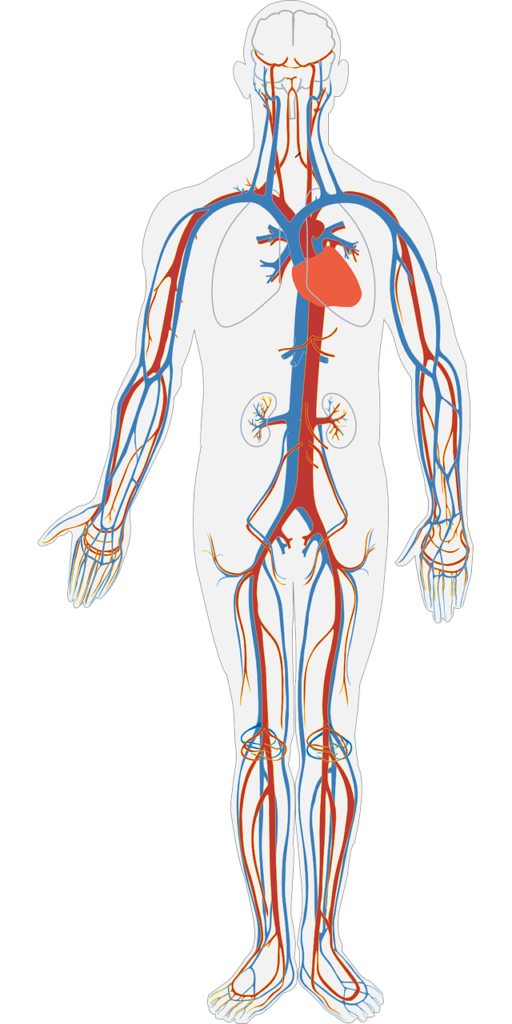
Once the nutrient-rich blood has done its job in the organs, it must return to the heart if circulation is to remain fluid. The calf, just like the heart, acts as a pump and propels poor blood to the top of our body. This blood can circulate thanks to the opening of the venous valves, the little flaps in our veins. They open and close in response to the muscle contraction created by the movement of our legs.
However, sometimes venous valves have malfunctions and do not close properly. The blood is then no longer properly propelled towards the heart and remains partially blocked at the bottom of our body, due to gravity.
The feeling of heavy legs is the consequence of this dysfunction in the valves.
The lower limbs are the first to be affected by poor circulation: heaviness, tingling, pins and needles, restlessness, etc. These discomforts can be intensified by prolonged standing, in summer when it’s hot, but also in winter for people who are sensitive to underfloor heating.
If nothing is done, the feeling of heavy legs may increase and be accompanied by other symptoms:
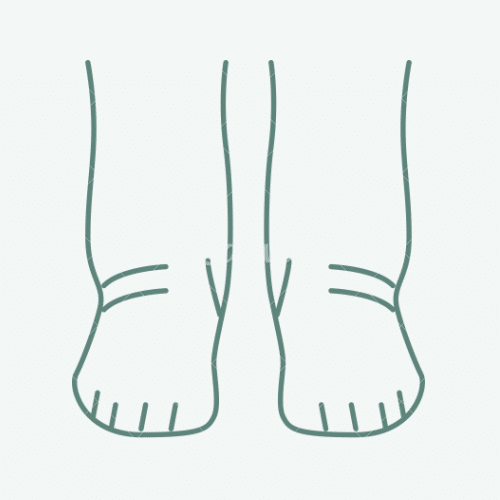
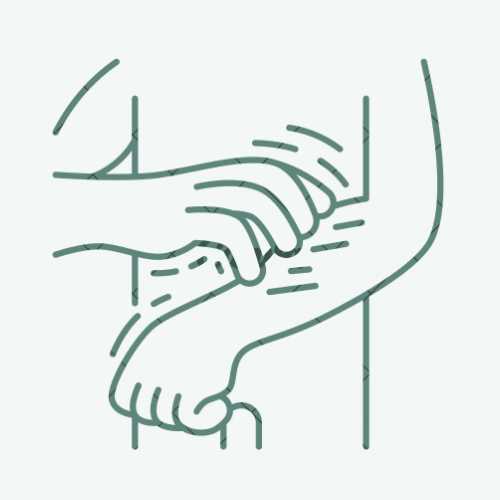
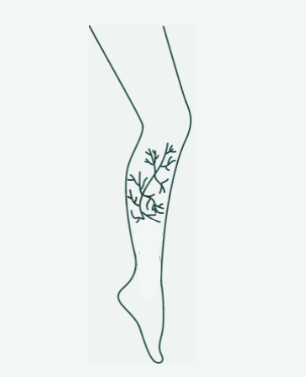
It is necessary to listen to these early warning signals as the situation can worsen and become a real illness. These first symptoms are actually the beginnings of what is known as chronic venous insufficiency.
Heredity, obesity and old age are the most important risk factors for blood circulation disorders.
In addition, women are particularly affected. During pregnancy, the compression exerted by the uterus hinders venous return. It is therefore common to see oedema or even varicose veins that may fade or disappear after delivery.
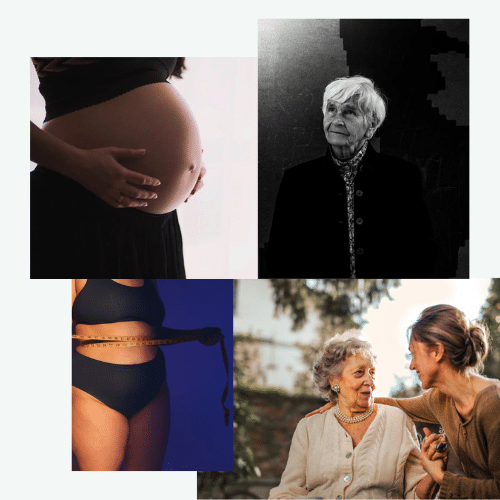

In order to relieve the discomfort caused by a feeling of heavy legs and to prevent varicose veins or other complications, it is recommended to avoid a static position (whether standing or sitting at a desk!). Doing regular physical activity (walking, climbing stairs) reduces discomfort.
If the static position cannot be avoided, then it is necessary to wear compression stockings. Their elasticity will compress your lower limbs and thus promote venous return.
Cold is also a known remedy for these feelings of discomfort. In case of discomfort and pain, it is indeed advisable to take cold showers and to avoid hot baths (as well as saunas/hammams).
Red vine, pilosella, horse chestnut and buckwheat are known for their beneficial effects on blood circulation. They are used as dietary supplements to facilitate venous return, strengthen the venous walls, reduce the phenomenon of water retention, etc.
Finally, it is also important to adopt a healthy lifestyle, a balanced diet, not to smoke, to exercise regularly, to avoid being overweight, to wear clothes that do not interfere with blood circulation, etc. All these elements will allow you to take care of your legs and your venous system!
Sources
🎁 Préparez les fêtes : -20% dès 49€ d’achat | Du 18/12 au 05/01 minuit, avec le code NOEL2025 🎁 Dismiss